


Welcome to another edition of Engine Shed, the only ‘00’ gauge update from the Hornby development team.
This edition is jam packed, featuring exclusive and exciting images of the LNER Coronation Coach decoration samples, final samples of the Lord Nelson Class ‘Sir Martin Frobisher’, and the LNER ‘Azuma’ train and coach pack.
The LNER Coronation Coaches project has made good progress over the past few months. We received the first shots of the Coronation Coaches in November last year, featured in the blog: Coronation Coaches: Intricate Parts. We displayed built samples at Warley Model Railway Show 2023 and Model Rail Scotland 2024, and Product Designer Sam demonstrated the first running samples in our special Signal Box video: Sam's Coronation Coaches Development Update. Now, we are proud to unveil for the first time the decoration samples of these iconic coaches!
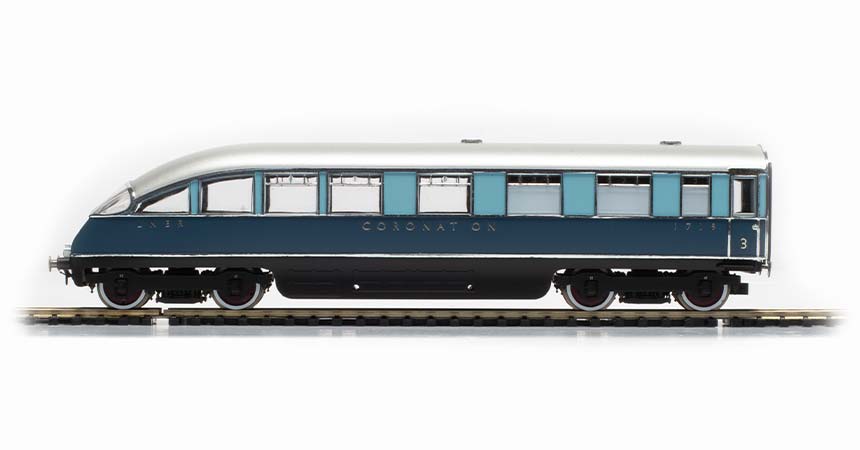
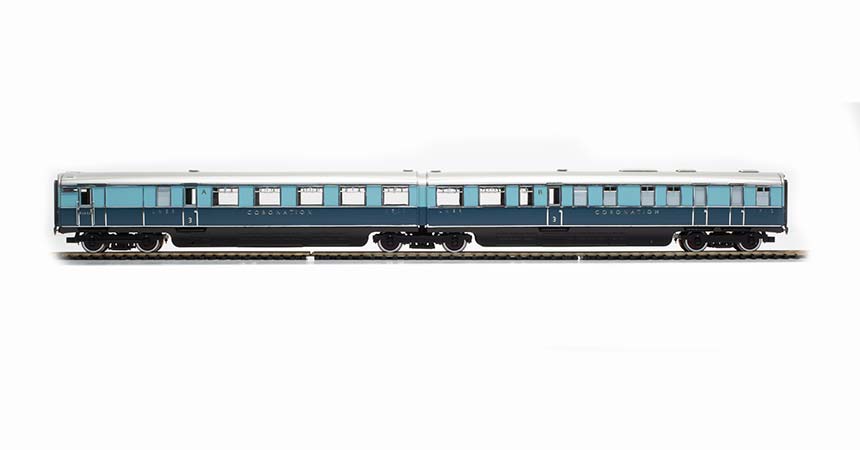
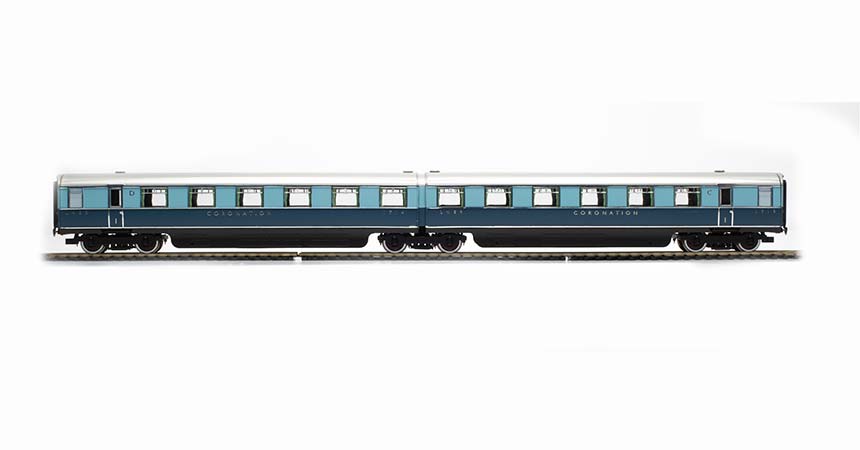
The Coronation Coaches incorporated exquisite detail befitting of premium steam travel of the day. A refined Art Deco design was highly sought after in Europe and the USA during the 1930s and was present as a movement throughout furniture, ceramics, jewellery among other areas including the railways. As such, Sir Nigel Gresley and the LNER designed their flagship high-speed express passenger service with the Art Deco styling in mind.
The beautiful Garter blue and Marlborough blue liveries have been applied on the decoration samples with great effect. To replicate the stainless-steel trim that was present on the real-life coaches, we experimented with using hot foil to create the shiny effect as paint does not have the reflective qualities needed. This is the first time that we have used hot foil for a model, so it is an innovative first step for us. The hot foiling process would not be appropriate to achieve the same effect for the lettering. This requires a minimum thickness of material to allow the foil to be applied, which in scale would be far too thick for the iconic thin ‘Gill Sans’ type-face ubiquitous of both Art Deco and railways. Instead, the stainless-steel lettering of ‘LNER’, ‘Coronation’ and the coach numbers on the bodysides is achieved using a self-adhesive etching delicately applied across each coach.
For the interior of the Observation Car, a nice wood grain effect on the walls can be seen and the centre wall has a decorative crest applied. The individually fitted armchairs and sofa (incredibly comfortable in real-life!) have been separately decorated using another method new to the Hornby team - hydro dipping. This process involves dunking parts into a bath topped with a floating film of the decoration to be applied, with the film wrapping itself around the part which allows the intricate stitched pattern from the seats to be replicated.
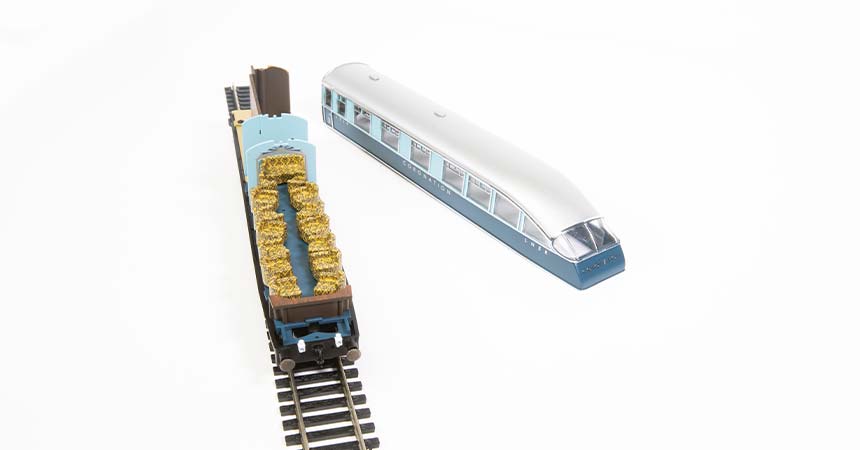


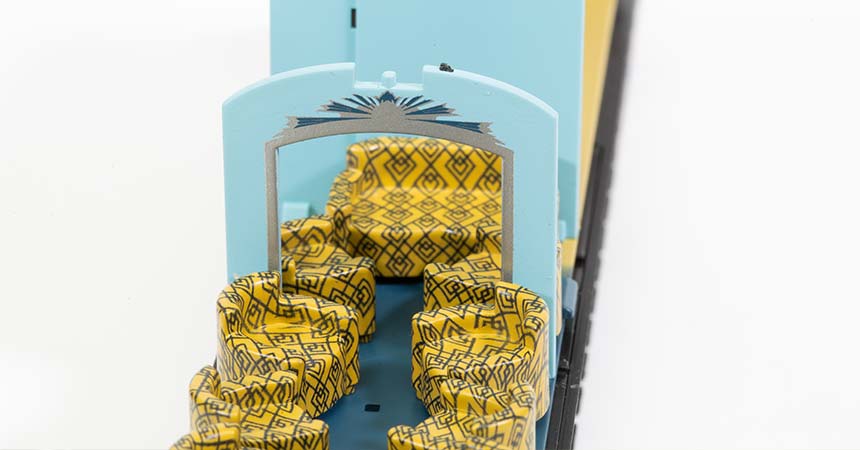
The decoration samples allow us to add colourful context to one of the key features of the design, the articulated streamlining and close coupling. To allow for such a high-speed service, a rubber seal was put between each coach to improve the aerodynamics, reducing drag to increase the efficiency of the train to make the journey faster. These seals were decorated in the same style as the coaches, making ‘The Coronation’ train look like an interrupted two-tone blue streak hurtling through the British countryside.
The coach bodies can be altered with simple-to-change magnetic ends, with ‘uncovered’ and ‘streamline’ variations available in the box allowing more choice in how you want your coaches to be represented. Magnetic close couplings and fixed coupling bars are also available in the accessory bag for these coaches which enables coupling at a prototypical distance, bringing the ‘streamline’ ends close for the visual effect of a continuous train.
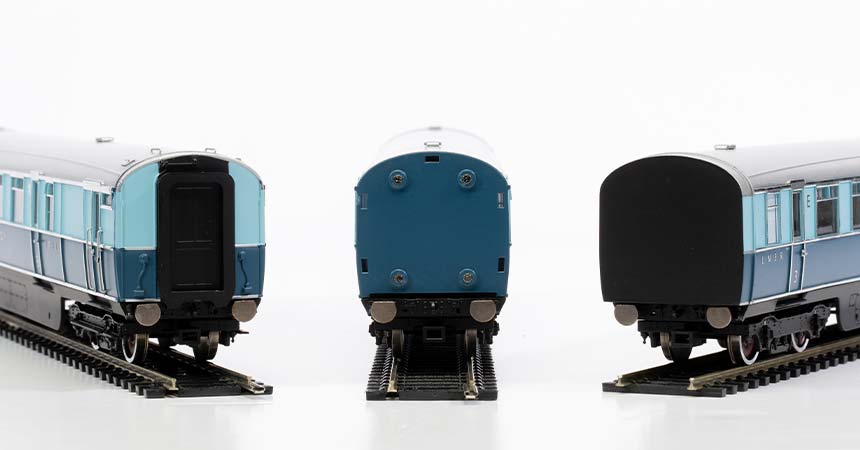


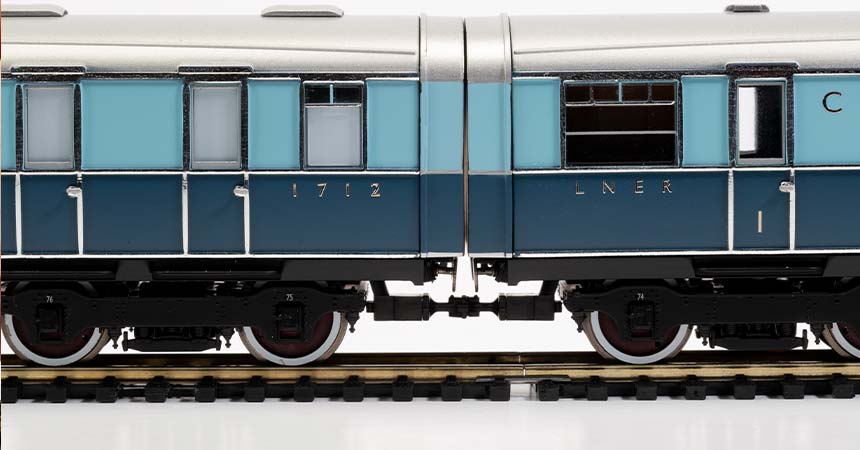

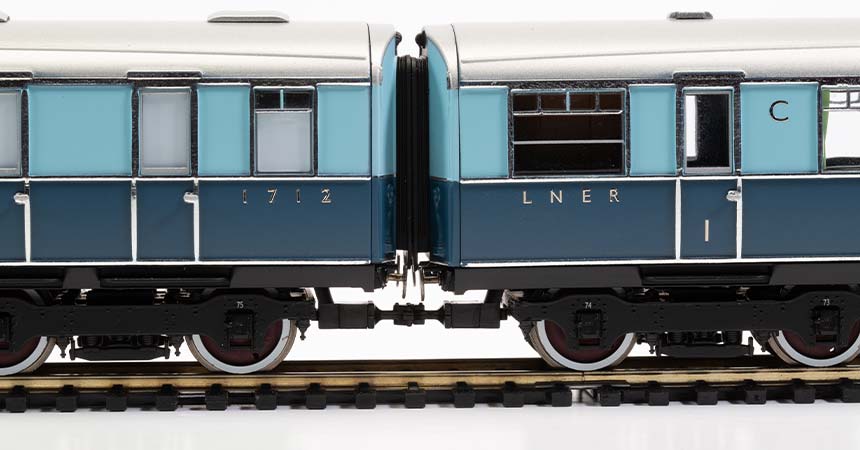
There are some issues with these samples that need to be corrected. The hot foil effect does need improving for the stainless-steel trim. This is most prevalent on the Brake Third, Coach A, with the guard’s door trim appearing blemished. As with all new techniques, it is important to get the effect right. Regarding colours and shades, the Marlborough blue livery needs to be tweaked to be slightly lighter and the silver of the roof should be a darker grey. Following prompt feedback, we received a new decorated body-shell with the corrected colours which can be seen on the left-hand side.
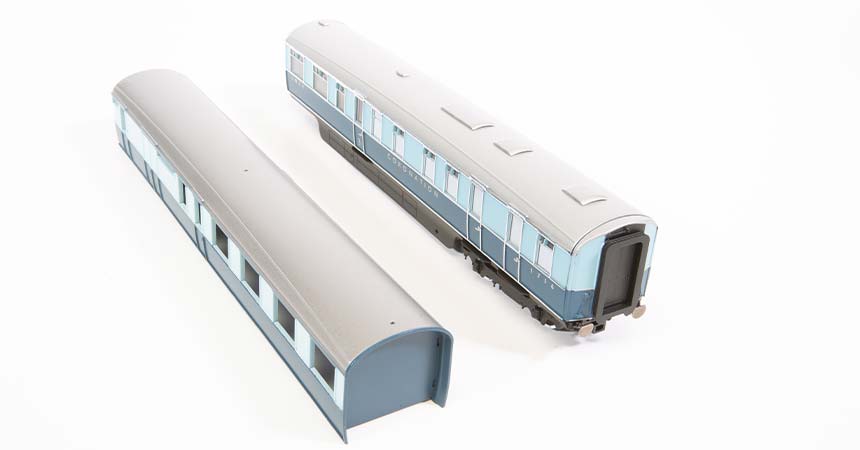
The Observation Car No. 1719 lives in the One:One Collection next-door to us in Margate and provides us with the unique opportunity to check features on the sample and compare it to the stunningly refurbished prototypical coach to ensure accurate decoration. Thank you to Locomotive Services Ltd for access and support with this project.
Over the coming months, we are expecting the next set of samples, which will combine the beautiful decoration with improved running characteristics. Please check back for future editions of Engine Shed to keep up with the next stage of development in anticipation for the launch of the LNER Coronation Coaches later this year.
In order to cope with the steadily increasing weight of express passenger traffic on the Southern Railway in the early years of Grouping, Richard Maunsell, the Chief Mechanical Officer, needed a locomotive that was more powerful than the King Arthur class, but one that would still conform to the various gauging and weight issues within the region and still be capable of hauling 500 ton trains at a speed of 55mph.
The new Lord Nelson design had to fit within the profile of the King Arthur class and having previously used a Drummond four-cylinder locomotive as a test bed, Maunsell altered the positions of the cranks on the Lord Nelson design to give eight exhaust pulses per revolution, rather than four. The resulting increase in power over the two-cylinder design of the King Arthur class was significant. A longer, Belpaire boiler, with a completely differently designed firebox was used, the cab design was like the L1 4-4-0, and the bogie was of a new design, being independently coil-sprung.
Maunsell decided to produce one example as a prototype, ordered from Eastleigh Works on May 29, 1925, which replaced the last engine on an existing King Arthur build order. The locomotive, No. E850, was completed on August 11, 1926, and after trials at Eastleigh, was sent to Nine Elms for trial running on the Western section mainlines to Bournemouth, Portsmouth, and Exeter, before moving across to Battersea for trials on the Dover boat trains.
Although areas for improvement were noted, there was enough confidence in the locomotive’s design for a further fifteen engines to be ordered: ten on March 13, 1927, and a further five on March 23, 1928. These locomotives were completed at Eastleigh between June 1928 and November 1929 and once the decision was taken to name the class after naval leaders, the Southern Railway’s publicity department went to work promoting the introduction, basing their claim of the class being “the most powerful express locomotive in Britain” on the theoretical tractive power of 33,300lbf.
Both Maunsell and his successor, Oliver Bulleid, brought several modifications to the class, such as chimneys, bogie frames and most noticeable of all, the introduction of smoke deflectors. These all give a subtle range of external differences over the pre-war appearance of the class. Post-war, speed recorders and AWS apparatus were added by British Railways, but it was the range of tenders that added interest. For most of their service life, the class ran with flat-sided 5000-gallon bogie tenders, but modified Urie style 5000-gallon bogie tenders from the S15 class were also used, along with 4000 gallon six-wheel tenders.
The first withdrawal came in May 1961, the last in October 1962 and one locomotive, No.30850 ‘Lord Nelson’, was saved for preservation in the National Collection.
For the final sample, the locomotive sports a Malachite Green livery with gilt lettering as is prototypical for the period.

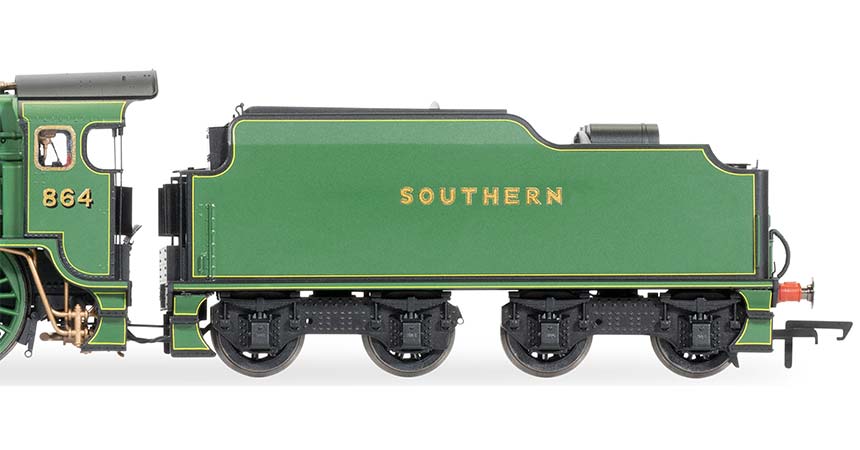
Smoke deflectors and a large diameter chimney representing the fitting of Lemaître blastpipes are replicated on the model.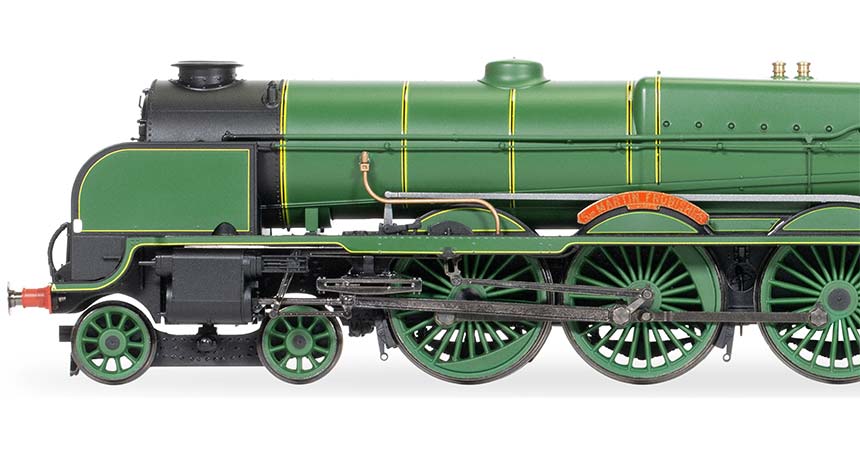 Not only does this locomotive incorporate fine detailing, but it is also DCC Ready with an 8-pin socket, contains a 5 pole skew wound motor and has dual flywheels.
Not only does this locomotive incorporate fine detailing, but it is also DCC Ready with an 8-pin socket, contains a 5 pole skew wound motor and has dual flywheels.
Another HST has arrived! The final samples of the LNER Class 801/2 ‘Azuma’ train pack and coach pack are now with us.
The Class 801 units were built between 2017 and 2020. ‘Azuma’ trains first entered service under LNER on 15 May 2019, with the initial journey from London King’s Cross to Leeds. 15 May 2024 marked the fifth-year anniversary of the ‘Azuma’ units entering service across the East Coast Main Line. LNER’s fleet of sixty-five ‘Azuma’ trains have travelled a total of more than 58-million miles over the five years in its duties transporting passengers!
The train pack contains five of the nine units that make up a full Class 801/2 unit:
· PDTRBF power car
· PDTS dummy car
· MS standard class coach
· MS standard class coach
· MF first class coach
 The power and dummy car feature a sleek nose front complete with full LNER ‘Azuma’ branding fully recreated including the distinctive red dynamic lines. The accurate corridor connection also features tinted glazing. The Class 801/2 model now comes with a 21-pin decoder socket and upgraded headlight control for DCC users. A new HM7000 sound profile is currently under development.
The power and dummy car feature a sleek nose front complete with full LNER ‘Azuma’ branding fully recreated including the distinctive red dynamic lines. The accurate corridor connection also features tinted glazing. The Class 801/2 model now comes with a 21-pin decoder socket and upgraded headlight control for DCC users. A new HM7000 sound profile is currently under development.
 A closer look at the roof detailing can be seen below, with an emphasis on the grill and pantograph.
A closer look at the roof detailing can be seen below, with an emphasis on the grill and pantograph.
 The following coaches can be added from coach pack R40350 to make a full Class 801/2 unit: MS standard class coach, TSRB standard buffet coach, TS standard coach, and MC composite coach.
The following coaches can be added from coach pack R40350 to make a full Class 801/2 unit: MS standard class coach, TSRB standard buffet coach, TS standard coach, and MC composite coach.
The coaches feature interior lighting and an accurate corridor connection with an electrical terminal box and electrification connector panels on both sides. A multitude of detail is present on the underframe and bogies. Destination boards on the body sides also show Kings Cross, York, and Edinburgh Waverley stations, which are the prototypical unit’s destinations.
Why not celebrate the fifth anniversary of the launch of the LNER ‘Azuma’ with both packs?
We had a great time attending Model World Live on 27 and 28 April! It was amazing to see the modelling community brought together at one show. A particular highlight was Pete Waterman and the Railnut’s incredible Making Tracks: The Final Frontier achieving the Guinness World Record for the Largest Portable Model Railway.
We hope you enjoyed the show, and we look forward to seeing you at the next one! Events.
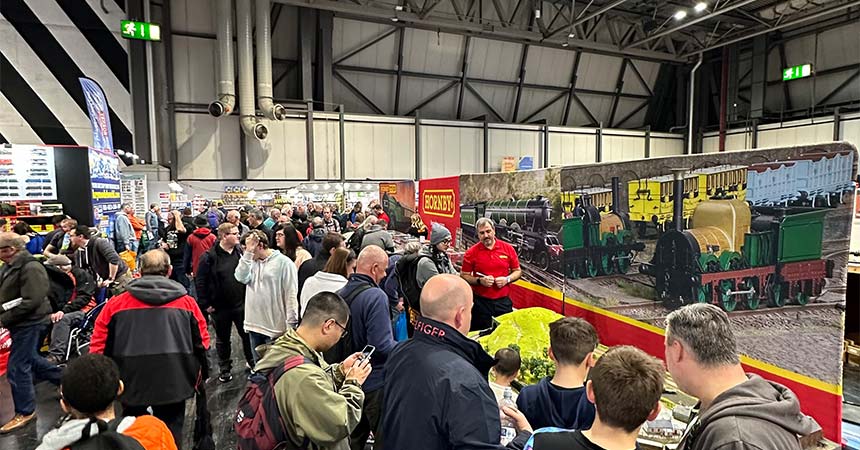
We hope you enjoyed our latest selection of final and decoration samples. Please email marketing@hornby.com for any questions or comments that you may have! Until next time…
Be sure to follow Hornby on Facebook, Twitter, TikTok and Instagram to be kept up to date on all the latest news and product updates. Don’t forget to subscribe to the Hornby YouTube channel and tune in to our Beyond the Buffers Podcast.
Happy Modelling!
The Engine Shed Team
© Hornby Hobbies Ltd. All rights reserved.